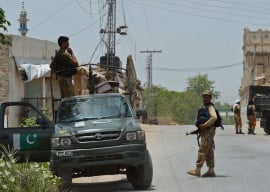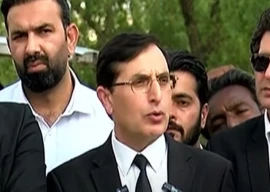
Located deep in Najigram valley in Abbasahib-Cheena which is renowned for its Buddhist monasteries, stands a Buddhist complex falling into disrepair and neglect.
The complex houses a main stupa, domed viharas and monastic cells. Additional cells are scattered along the mountains that run parallel to the site. To get to the remains, one has to travel on foot since there are no roads.
“I cannot believe such rich and beautifully preserved archaeological sites exist in Swat,” commented Faisal Khan, a student and adventurer. “The location, too, is breathtaking,” he added.
Some of the largest Buddhist settlements could once be found in the valley, but many have since been destroyed in the name of progress.
The coins, pottery and statues recovered from the debris were subsequently sold and stones reused in construction.
“Discovered by scholars E Barger and P Wright in 1938, it is undoubtedly the best preserved Buddhist complex in Swat,” said Dr Luca Olivieri, Director Italian Mission, Pakistan.
Olivieri stated that the Abbasahib-Cheena archaeological site shares similarities with the Gumbat Balo Kale site built in 3 AD, which suggests that the complex may have been constructed in the late phase of the Kushan Empire.
One major reason the site is so well-preserved is that it is situated far from residential areas and settlements, according to social and political activist Afzal Shah. However, the land is owned by locals and is under cultivation.
The site of the Abbasahib-Cheena Buddhist complex is owned by a landlord who is embroiled in a legal battle with the government, he said.
“In my view, the government should either lease the entire piece of land or buy it off him.” Shah believes that should the valley be granted protection by the government, it would help attract tourists in greater numbers, while simultaneously preserving its pristine environment.
Curator Swat Museum Faizur Rehman told The Express Tribune, “There is a plan to undertake further excavation and if we consider it worth protecting, the government will upgrade its status.” He added that various other sites in Swat are not legally protected and they have also been brought to the government’s notice.
Rehman stated that the Department of Archaeology has limited resources and with the increase in population, greater resources and at least 24 guards are required to protect the sites from vandalism.
The complex is currently one of the target sites selected by the Archaeology Community Tourism project jointly launched by the Italian Mission in Pakistan and Pakistani archaeologists.
Published in The Express Tribune, April 17th, 2012.
COMMENTS (10)
Comments are moderated and generally will be posted if they are on-topic and not abusive.
For more information, please see our Comments FAQ




















1713889672-1/Plastic-waste-(2)1713889672-1-270x192.webp)























@khan: Please note that we either Huns, Mughals, Hindus, Sikhs, Afghans, Iranian, Turkish but not not Arabs. A small groups of Arabs entered this part of Asia through Deebal (Karachi) and most of the them settled in Sindh and costal lands of baluchistan i.e. Makran and other adjacent areas. They Makrani people who resamble the Arabs (Habshi) are the only left overs of Arabs apart from their traditions which are now blindly followed as a religion in Pakistan.
Cultres of the world belong to everyone and that's why every cultural treasure is called a shared asset.
@khan if white living america or spainish invaded and occopies south american does not mean they are native americans or red indiano the same way we are arabs and turks or pershians ....
this is what we say the irony of fate
“All that we are is the result of what we have thought. The mind is everything. What we think we become.” Buddha
“Teach this triple truth to all: A generous heart, kind speech, and a life of service and compassion are the things which renew humanity.” Buddha
This is high time to launch public awareness campaigns for our own identity. we have rich cultural heritage and civilization. lets all join hands to preserve it spread it and protect it
crops are being grown amid these ruins, posing serious damage to whatever is left. why calling out UNESCO?. wheres the archaeological dept of the Pakistan?. are they just good enough to draw salaries every month.??
Do we really care??? Isnt there likes of Zaid and Guls including our own history books say that we are Arabs?
We have a government but just for corruption, not for resorveb these precious historical places.
This is absolutely a great archaeological sites, it is the duty of UNESCO to take measure for its preservation